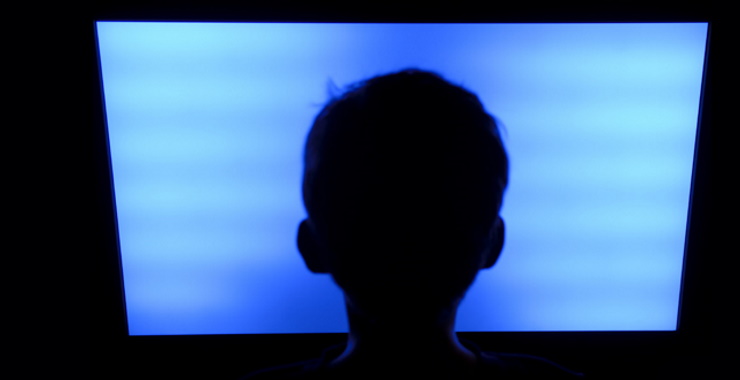How Did Cable Television And Streaming Services Impact The Movie Business?
Violence in the media: Psychologists report potential harmful effects
Early enquiry on the effects of viewing violence on idiot box—especially amid children—constitute a desensitizing effect and the potential for aggression. Is the same truthful for those who play violent video games?

Television and video violence
Near since the dawn of television, parents, teachers, legislators, and mental health professionals have wanted to understand the impact of television programs, particularly on children. Of special concern has been the portrayal of violence, particularly given psychologist Albert Bandura's piece of work in the 1970s on social learning and the tendency of children to imitate what they run into.
Equally a result of 15 years of "consistently disturbing" findings about the violent content of children's programs, the Surgeon General'southward Scientific Advisory Committee on Telly and Social Behavior was formed in 1969 to assess the touch of violence on the attitudes, values, and behavior of viewers. The resulting report and a follow-upwardly report in 1982 past the National Found of Mental Wellness identified these major effects of seeing violence on boob tube:
- Children may get less sensitive to the pain and suffering of others.
- Children may be more fearful of the world effectually them.
- Children may exist more than likely to behave in ambitious or harmful ways toward others.
Research by psychologists L. Rowell Huesmann, Leonard Eron, and others starting in the 1980s found that children who watched many hours of violence on telly when they were in elementary school tended to bear witness higher levels of aggressive beliefs when they became teenagers. By observing these participants into machismo, Huesmann and Eron found that the ones who'd watched a lot of Television violence when they were 8 years old were more likely to be arrested and prosecuted for criminal acts as adults.
Interestingly, beingness aggressive every bit a kid did not predict watching more violent TV as a teenager, suggesting that TV watching could be a cause rather than a effect of aggressive behavior. Nevertheless, later research by psychologists Douglas Gentile and Brad Bushman, among others, suggested that exposure to media violence is just one of several factors that tin can contribute to aggressive behavior.
Other research has found that exposure to media violence can desensitize people to violence in the existent globe and that, for some people, watching violence in the media becomes enjoyable and does non result in the anxious arousal that would be expected from seeing such imagery.
Video game violence
The advent of video games raised new questions about the potential touch of media violence, since the video game player is an active participant rather than merely a viewer. 97% of adolescents age 12–17 play video games—on a calculator, on consoles such equally the Wii, Playstation, and Xbox, or on portable devices such every bit Gameboys, smartphones, and tablets. A Pew Research Center survey in 2008 found that half of all teens reported playing a video game "yesterday," and those who played every day typically did so for an hour or more than.
Many of the most popular video games, such as "Call of Duty" and "K Theft Auto," are trigger-happy; still, as video game technology is relatively new, there are fewer empirical studies of video game violence than other forms of media violence. All the same, several meta-analytic reviews accept reported negative effects of exposure to violence in video games.
A 2010 review by psychologist Craig A. Anderson and others concluded that "the evidence strongly suggests that exposure to violent video games is a causal chance factor for increased ambitious beliefs, ambitious knowledge, and ambitious affect and for decreased empathy and prosocial beliefs." Anderson's before inquiry showed that playing violent video games tin increment a person's aggressive thoughts, feelings, and behavior both in laboratory settings and in daily life. "I major determination from this and other inquiry on tearing entertainment media is that content matters," says Anderson.
Other researchers, including psychologist Christopher J. Ferguson, take challenged the position that video game violence harms children. While his ain 2009 meta-analytic review reported results like to Anderson'south, Ferguson contends that laboratory results have not translated into existent globe, meaningful effects. He also claims that much of the research into video game violence has failed to control for other variables such equally mental health and family unit life, which may have impacted the results. His piece of work has plant that children who are already at risk may be more probable to choose to play violent video games. Co-ordinate to Ferguson, these other risk factors, every bit opposed to the games, cause aggressive and violent behavior.
APA launched an analysis in 2013 of peer-reviewed research on the affect of media violence and is reviewing its policy statements in the area.
Cited enquiry
Anderson, C.A., Ihori, Nobuko, Bushman, B.J., Rothstein, H.R., Shibuya, A., Swing, E.Fifty., Sakamoto, A., & Saleem, M. (2010). Violent video game furnishings on aggression, empathy, and prosocial behavior in Eastern and Western countries: A Meta-analytic review. Psychological Bulletin, Vol. 126, No. 2.
Anderson, C. A., Carnagey, N. L. & Eubanks, J. (2003). Exposure to violent media: The effects of songs with violent lyrics on ambitious thoughts and feelings. Periodical of Personality and Social Psychology, Vol. 84, No. five.
Anderson, C. A., & Dill, Thousand. East. (2000). Video games and aggressive thoughts, feelings, and behavior in the laboratory and in life. Periodical of Personality and Social Psychology, Vol. 78, No. 4.
Ferguson, C.J. (2011). Video games and youth violence: A Prospective analysis in adolescents. Journal of Youth and Adolescence, Vol. forty, No. 4.
Gentile, D.A., & Bushman, B.J. (2012). Reassessing media violence effects using a adventure and resilience arroyo to agreement aggression. Psychology of Popular Media Culture, Vol. one, No. iii.
Huesmann, L. R., & Eron, 50. D. (1986). Television set and the aggressive child: A cross-national comparison. Hillsdale, NJ: Erlbaum.
Huesmann, L. R., Moise-Titus, J., Podolski, C. L., & Eron, 50. D. (2003). Longitudinal relations between children's exposure to TV violence and their aggressive and violent behavior in immature adulthood: 1977–1992. Developmental Psychology, Vol. 39, No. 2, 201–221.
Huston, A. C., Donnerstein, E., Fairchild, H., Feshbach, N. D., Katz, P. A., Murray, J. P., Rubinstein, E. A., Wilcox, B. & Zuckerman, D. (1992). Large world, minor screen: The role of television in American society. Lincoln, NE: University of Nebraska Press.
Krahe, B., Moller, I., Kirwil, L., Huesmann, 50.R., Felber, J., & Berger, A. (2011). Desensitization to media violence: Links with habitual media violence exposure, aggressive cognitions, and aggressive behavior. Journal of Personality and Social Psychology, Vol. 100, No. four.
Murray, J. P. (1973). Television and violence: Implications of the Surgeon General's research programme. American Psychologist, Vol. 28, 472–478.
National Institute of Mental Health (1982). Television set and behavior: Ten years of scientific progress and implications for the eighties, Vol. 1. Rockville, Physician: U.S. Department of Health and Human Services.
Recommended Reading




Members may authorize for lower pricing
Source: https://www.apa.org/topics/video-games/violence-harmful-effects
Posted by: matthiesaltrove88.blogspot.com


0 Response to "How Did Cable Television And Streaming Services Impact The Movie Business?"
Post a Comment